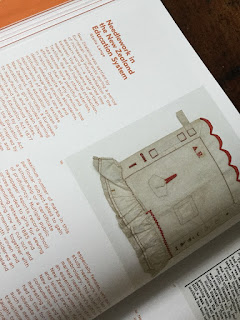This is one of a several post series, outlining the background for work I have accepted for an exhibition in at the From out of the blue Studio Gallery . (Spoiler alert - my work won an award).
This post is a little bit historic, here in New Zealand 2020 was rough, as it was across the world, Covid-19 required us to work from home, to socially distance and to practice much more stringent hygiene than most of us usually did. There was hand washing, and and coughing into elbows and towards the end of 2020 wearing of masks. There was also fear, and the unknown and worry, as we adapted to new rules and conventions around living that were designed to keep us safe and healthy as a community, a team of five million our Prime Minister called us. New Zealand geographically is isolated - distance from many places. Usually this causes us New Zealanders to have a little moan, travel to the UK takes days even (well 26+ hours on a fast plane, longer usually given more stopovers and economy flights with slower planes), to Australia 5 hours, and to the USA 12-19 hours and costs a lot. In 2020 this distance became a bonus, New Zealand shut its boarders and went into lockdown earlier than most countries - with a result that Covid-19 rates and deaths in New Zealand were and are still low compared to many other places.
 |
Sewing with my 1960's Singer 15 Clone - a simple vintage straight stitch machine |
Here in New Zealand we watched as the world, countries and peoples who were not able to shut boarders and who financially were not able to set up the economics required for a 6 week stay at home order - faced increasing levels of Covid-19 in their communities. I was shocked and dismayed at the rising toll on hospitals, health workers, and communities.
I saw amazing craft responses, the prices of second hand sewing machines skyrocketed, here in NZ one yarn supplier initially positioned themselves as an essential service on mental health grounds, and our/my students in a Fashion School discovered that while New Zealand was only permitting 'essential services for shopping and travel' that bedding suppliers sold flat sheets as 'essential' which meant they could purchase fabric to keep designing. People took up knitting, crochet, baking, yoga, and sour-dough breads to fill the void left by commuting and activity beyond their homes.
From mid 2020 - our government began to encourage the use of masks, in additional to hand sanitiser and other measures, I made masks for those around me who could not make their own and gifted them. Our students made masks in their spare time and sold these for 'cost' -the local media picked up their story and they became locally famous Georgie, Cassidy and Katherine - there was demand. My first masks were made as exploratory masks, using materials to hand, elastic became in shoe supply and I was grateful for an earlier interest in sewing dolls clothes for my children years back that left me with meters of narrow elastic, and for work for ordering a spool of elastic before national and retail supplies ran low. I was grateful for my Ravelry Communities, there other crafters, knitters and sexists and makers of all kinds discussed their experiences, knowledge and strategies for Covid-19. Ravlery is an amazing space, those who are geeky and passionate enough about their knitting are also usually intelligent and passionate about other things, and many are experts in other areas, scientists, educators, medics and lab specialists. I followed discussion 'threads' where mask making was discussed and knowledge shared, where the progression of Covid- its transmission and occurrence globally was tracked and discussed, and where the issue of shopping and cooking when supply chains were disrupted were problem solved. Where people shared and networked in ways that were amazing to me still - the hive mind that is Ravlery which usually works together to provide expertise and knowledge in the field of crafting - worked to share info to keep its members safe. I am deeply grateful for those who shared their knowledge and unpacked technical information and linked to reliable sources (while discussing the pros and cons of everything in intelligent ways).
Once that initial flurry of activity died down - and all those I knew who needed masks were provided for my thoughts turned to making masks that maybe were more planned, more deliberate and more reflective of what I wanted to say. I had seem some amazing masks on the FB group Breathe, many by indigenous makers who worked their unique heritages and craft traditions into their masks. If I was going to wear a mask - I wanted my mask to better represent me.
I began to embroider some masks - to see where this would take me, using the tambour technique I have been working with for nearly a decade. I began with the phrase - Be Kind, one Jacinda Adern used to guide New Zealanders to be supportive of each other.
More in next post.
Na Stella






















